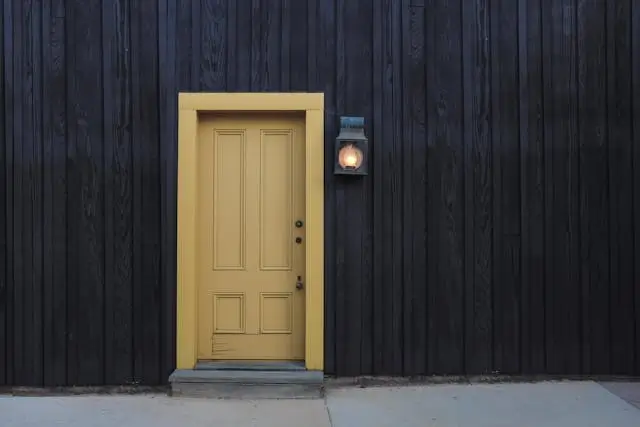Doors—they seem like a simple part of a building’s shell, but their impact on energy efficiency can be surprisingly significant. Nowadays, with everyone focused on reducing their environmental impact and keeping utility costs low, picking the right doors is an important step toward both comfort and sustainability.
This guide unpacks the key features of energy-saving doors, helping you navigate the options and make informed choices for your next renovation project.

The Concept of Energy-Saving Doors
Energy-saving doors are made to reduce the amount of heat that passes between your home and the outside. Unlike traditional doors that allow conditioned air to leak, these advanced options act as a thermal barrier, helping you maintain a comfortable interior temperature without relying heavily on your HVAC system.
This translates to significant energy conservation. By reducing the amount of work your heating and cooling systems need to do, energy-saving doors can lead to lower utility bills and a smaller environmental footprint. This is especially crucial for larger openings in your home, like sliding doors, which can often be a weak point in terms of insulation.
Types of Energy-Saving Doors
When choosing an energy-efficient door for your home, it’s important to know about the different types available. Each type offers unique benefits and features, tailored to enhance thermal performance and reduce energy consumption. Here’s a closer look at some of the most effective options on the market:
Insulated Doors: Materials and Construction
Insulated doors are fundamental in minimizing heat transfer between your home and the outdoors. They are usually made from materials like fiberglass, wood, or steel and often have a core filled with foam insulation.
The type and density of the foam can differ, but polyurethane and polystyrene are popular choices because they insulate well. These doors help keep your indoor temperature steady and can lower your heating and cooling costs.
Doors with Thermal Breaks
Thermal breaks are essential for preventing heat loss, especially in metal doors. These breaks are sections in the door made from a material with low thermal conductivity, inserted between the inner and outer layers of the door. By interrupting the flow of heat, thermal breaks boost the door’s energy efficiency. This technology is particularly useful in areas with extreme weather conditions, as it significantly improves the door’s insulation properties.
Weatherstripping and Sealing Technologies
Good sealing is key to getting the best performance from energy-saving doors. Weatherstripping around the door frame seals gaps and prevents air leakage, which is a major culprit in energy loss. Materials such as silicone, felt, or vinyl are commonly used for weatherstripping. It’s important to ensure that the door is equipped with durable and weather-resistant stripping to maintain its effectiveness over time.
Glazed or Windowed Energy-Efficient Doors
Doors with windows can enhance aesthetics and bring natural light into your home, but they need to be designed with energy conservation in mind. Energy-efficient glazed doors use double or triple-pane glass filled with inert gases like argon or krypton to reduce heat transfer. The frames of these windows are also crucial and should be made from materials like treated wood, vinyl, or fiberglass, which offer additional insulation.
Choosing the right type of energy-saving door involves considering the specific needs of your home, including aesthetic preferences, climate, and your energy usage goals.
Considerations Before Buying
Choosing the right energy-saving door is more than just picking a style; it’s about making an informed decision based on a variety of crucial factors. Here are some key considerations to guide you through the process:
Evaluating Your Home’s Energy Needs
Start by understanding your home’s specific energy vulnerabilities. Does your house struggle to retain heat in the winter, or is keeping cool during scorching summers a bigger challenge? Analyzing your energy bills can provide clues.
If you live in a cold climate, prioritize doors with a high R-value, which indicates better insulation for keeping heat in. Conversely, for hot climates, a lower solar heat gain coefficient (SHGC) might be more important, signifying the door’s ability to block heat from entering. Energy Star certified doors are a great option, as they meet strict energy efficiency guidelines set by the Environmental Protection Agency (EPA).
Architectural Compatibility
Your new energy-saving door should complement your home’s overall aesthetic. Fiberglass and steel doors offer a wide range of styles and finishes to match various architectural designs, from classic to contemporary. Solid wood doors remain a popular choice for traditional homes, but be mindful that while they can be energy-efficient, they might require a thicker core for optimal performance.
Local Climate Considerations
Beyond summer and winter extremes, consider how your local climate might impact your door selection. For example, if your area experiences frequent heavy rain or strong winds, ensure the door has weatherstripping designed to withstand these elements. Coastal regions with high humidity might benefit from doors with corrosion-resistant materials like fiberglass or aluminum.
Budgeting for Energy Savings
Energy-saving doors typically come at a premium compared to their standard counterparts. However, the long-term savings on your energy bills can outweigh the initial investment. Factor in the potential payback period, which is the estimated time it takes for the energy cost savings to offset the upfront cost of the door. This will help you decide if a higher-efficiency door aligns with your budget goals. Many government programs and utility companies offer rebates or incentives for installing energy-efficient doors, so explore these options to make your investment even more cost-effective.
A Smarter Choice for Your Home
Selecting the right energy-saving door can significantly impact your home’s comfort and environmental footprint. Consulting with a professional contractor or qualified door salesperson can ensure you choose a door that not only offers exceptional thermal performance but also complements your home’s aesthetics and withstands the elements.
Investing in energy-efficient upgrades like doors is a long-term commitment that will benefit you and your environment for years to come. So, take the first step toward a smarter home—explore the world of energy-saving doors and unlock a future of comfort and savings.
